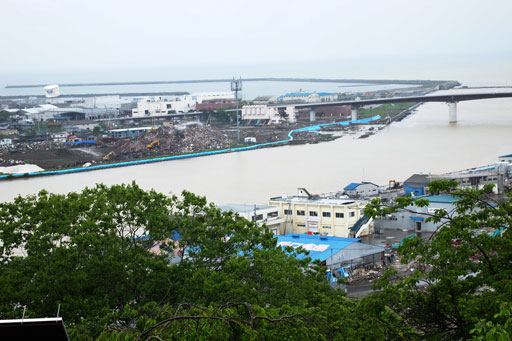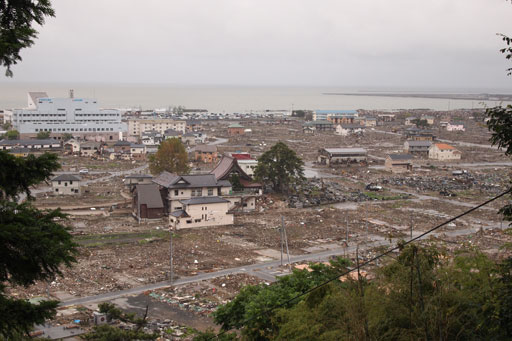Five months after the earthquake and tsunami that devastatednortheastern Japan, some areas are back to normal while others arecharacterized by temporary housing, piles of rubble and businessesthat can't afford to rebuild, with many people still unaccountedfor. With a population of 5.7 million, more than 20,000 people werekilled and 500,000 suffered damage from the tsunami in the wake ofthe 9.0 magnitude earthquake.
|We spoke with Paul Atkinson, managing directorof the insurance division of Cornes & Co. Ltd., andYoshiro (“J.R.”) Hyokawa, senior vice president ofKyoritsu InsuranceBrokers of Japan Co. Ltd., both members of the Assurex Globalnetwork, about the state of recovery in earthquake-strickenJapan.
| 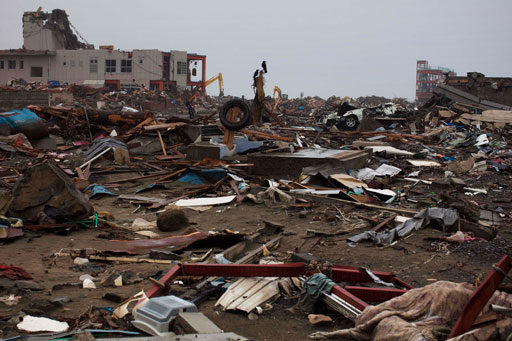
Q: What is the current status of rebuilding in theearthquake-stricken area?
|Atkinson: Depending on who you talk to, we'veseen varying levels of success. With 25,000 people dead or missing,120,000 homes and buildings destroyed, and an estimated $300billion USD in damages, it's the largest natural catastrophe ever,even topping Hurricane Katrina. Reconstruction is going to takesome time; a lot of work has been done to clear up many parts ofthe region, and areas that were less devastated such as downtowncities are more or less back to normal. The tsunami-stricken area,however, still has a long way to go.
|Hyokawa: Miyagi, Iwate and Fukushima in theTohoku region were the most heavily stricken areas. Teikoku DataResearch reported that damages confirmed by the Police Office as at14th July are:
Prefectures | Death | Missing | Refugees |
Miyagi | 9,348 | 2,094 | 12,874 |
Iwate | 4,611 | 2,453 | 6,127 |
Fukushima | 1,600 | 272 | 16,642 |
Total | 15,559 | 4,819 | 35,643 |
Major highways and railroads in the interior recovered quicklyin early April and were used to deliver emergency supplies ofwater, food and clothing. By the end of April, public utilityservices had also recovered. However, there have been problems inrecovery.
|The quantity of rubble from demolished buildings is 3 to 5 timesmore than the municipalities' annual disposal capacity. Through theefforts of the government and many volunteers, rubble in roads andtowns was removed, but 60 percent to 70 percent has just beenheaped in temporarily storage places. With the recent warm weather,this has produced a huge amount of flies and other vermin.
|Housing for refugees is also an issue. In mid-July, the totalnumber of refugees in the three prefectures was around 100,000.Although 64 percent has been moved to newly built temporaryhousing, more than 35,000 still remain in refugee camps, such asschool gymnasiums without air conditioning or privacy. Most of therefugees are older people without cars who are afraid to live intemporary houses built in these isolated areas.
Cause of Death | Number | % |
Drowned | 12,143 | 92.5 |
Crushed | 578 | 4.4 |
Fire | 148 | 1.1 |
Unidentified | 266 | 2.0 |
Finally, radioactive contaminated areas 20 to 30 kilometers fromthe Fukushima Nuclear Power Station will be impossible to rebuild.Cattle and pets were left there to die.
|Further, under the rubble, there are still corpses of missingpersons killed by buildings that collapsed in the tsunami. By April11, more than 13,000 bodies had been autopsied, according togovernment officials.
||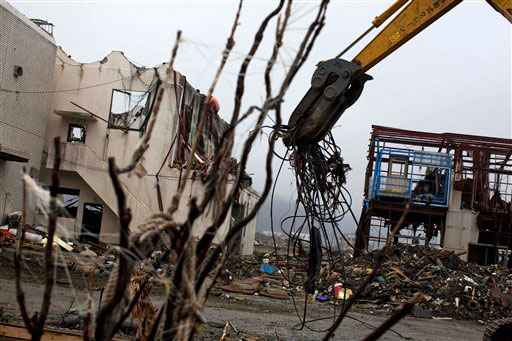
Q: Which businesses are rebuilding morequickly?
|Hyokawa: In early August, the Ministry ofEconomy and Industry disclosed that 80 percent of manufacturingplants damaged by the quake had been restored to prequake levels bythe end of June. In researching 20 major industries in the strickenarea, the Sankei Business News found that 90 percent had recoveredenough to operate, with their first priority being supplytheir customers.
|On the other hand, Teikoku Data Research surveyed 5,004 small tomidsized companies with headquarters in the coast of threeprefectures. Rebuilding status as of July 22 was as follows:
Prefectures | Rebuilt to operate (%) | No plan to rebuild (%) |
Miyagi | 56.1 | 43.1 |
Iwate | 59.6 | 40.4 |
Fukushima | 23.7 | 76.3 |
Total | 50.1 | 49.9 |
In the coastal regions, the major industry is fishing related.Some ports were rebuilt but fishing boats, refrigerated warehousesand fish processing facilities have not been rebuilt. Coastal seabeds also are clogged with tons of rubble taken from demolishedareas. It is economically and technically difficult to rebuildthose facilities in the coastal regions.
|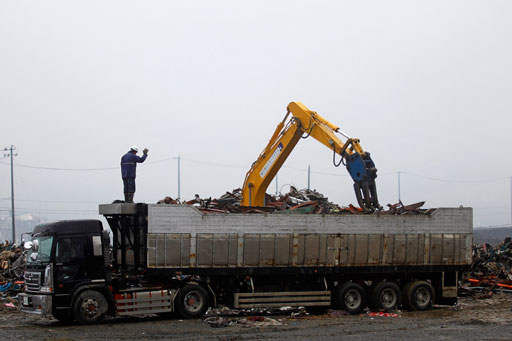 :
:
Q: Have there been any problems getting equipmentand material, or site surveys for claims?
|Atkinson: Initially it was the same asHurricane Katrina—the first tsunami took out so much of the regionand infrastructure that assistance physically couldn't get into thearea. Then there was the subsequent nuclear scare and closing offareas because of the fear of radioactivity. It was difficult infirst three to four weeks to get claims adjusters into the areas ofworst damage so they couldn't do loss inspections. It's better nowin most of the region, with the exception of the zone around thenuclear power plant that requires government approval to enter.
|Hyokawa: One of the Japanese property-casualtyinsurers sent out 3,000 staffers from all over Japan to the threeprefectures through the end of June. They were engaged in sitesurveys, responding to inquiries and filing claims frominsureds.
|By the end of April, according to the insurer, it was verydifficult for staffers to visit the site because of damaged roadsand lack of cars. The following record of homeowner claimsettlements shows that by May, almost 80 percent of claims filedhad been settled.
Claims | March | April | May | June |
Notified | 13,000 | 88,000 | 126,000 | 164,000 |
Settled | - | 8,000 | 100,000 | 128,000 |
Settlement (%) | 9 | 79 | 78 |
|
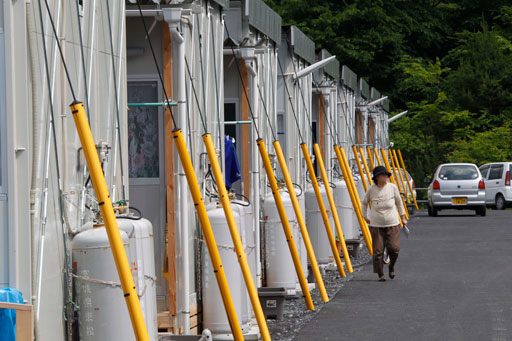
Q: Are residents who were relocated to differentlocations per business continuity plans back at their offices orhomes?
|Atkinson: Our employees are in a moderndowntown Tokyo building, built to earthquake codes which areregularly updated, so it wasn't an issue for us. A lot of the newer50-story towers shook, which was intense. People got under desksand held on to whatever they could, but most of it was over withinminutes or less.
|Hyokawa: In the stricken area, Japanesestaffers and residents did not evacuate. They remained to rebuildtheir houses when possible. I think the staffers and residentsevacuated for business continuity are foreigners or Japaneseworking for foreign companies. They were back to offices and homesaround by the middle of April. By that time, concerns about theFukushima nuclear power station had calmed down and day-to-day lifewas back to normal.
|
Q: What sort ofearthquake-resistant building standards are mandatory, and do youthink the March quake will result in fine tuning theserequirements?
|Hyokawa: After experiencing large earthquakesin Niigata (1964), Tokachi (1968) and Miyagi (1978), the governmentsubstantially revised the Architectural Standard Law in 1981,incorporating the regulation of earthquake-proof structuralstandards. The standard was mandatory and the Kobe quake of 1995showed the efficiency of the revised law. The buildings constructedafter 1981 were much less damaged than buildings constructed before1981. The law was revised again in 1995 for reinforcement ofbuildings built before 1981.
|The 1981 law was designed to withstand quakes with a magnitudeof 6, a scale of earthquake that is expected to happen once every100 years.
|Most of structures in the March 11 disaster were not affected byshocks from that event but by aftershocks. The largest one, an M7on the Richter scale, happened on April 7. Buildings partly damagedby 3/11 were not repaired yet but were not destroyed. This atteststo the effectiveness of the earthquake–resistant buildingstandards of 1981 and 1995.
|Q: Roughly what percentage of businesses damaged inthe quake carried insufficient or no insurance?
|Atkinson: Most businesses in Japan don't buyearthquake protection. The cost is quite high and many businessesdon't know it's available because a lot of domestic insurancecompanies don't want to sell it. Foreign companies are more activebecause it's a differentiator for them to break into the commercialinsurance market. The economic loss is for that region is $300billion, and insured loss between $20 and $45 billion; 90 percentof businesses in the region did not have insurance, which istypical for the region; I would be surprised if even in Tokyo morethan 20 percent of businesses carry it. However, demand is changingsince the quake. Even though rates are going up from 20 to 50percent or higher, people are keeping the coverage, restructuringwith higher deductibles or changing exposures.
|Hyokawa: Earthquake insurance on houses andpersonal effects is available only for policyholders of personalproperty insurance. Around 40 percent of the property insurancepolicyholders purchase earthquake insurance, equivalent to 23percent of total families in Japan.
|The percentage of commercial property policies with quakecoverage is much lower than personal lines. However, almost allforeign companies doing business in Japan purchase earthquakecoverage. The problem is insurers' limited capacity to writeearthquake risks. Japanese insurers' limit of liability and premiumrate for earthquake are totally controlled by overseas reinsurancemarket.
|For example, for a Tokyo office building owned by foreigninvestment funds, the pre-quake premium level was:
|Limit for A/R: JPY 10,000,000,000 (Property replacementvalue)
|Premium for A/R: JPY 2,200,000
|Sub limit for EQ: JPY 1,000,000,000 (10% of propertyreplacement value)
|Premium for EQ: JPY 7,600,000.
|Because of the cost, even large companies like Toyota, Honda orPanasonic do not insure earthquake risk. Instead, they reservefunds for earthquake. Kobe Steel suffered heavy losses from theMarch quake, but restored damages by spending their internalreserves because they do not insure earthquake risk.
|Q: Are you experiencing any problems with insurersregarding claims denials or speed of processing that might beholding up the building process?
|Atkinson: This hasn't been an issue for us;most of the losses we've dealt with have been no dispute in termsof loss. Earthquake coverage is a separate endorsement in Japan,while in the West it's normally covered under the fire policy. Ifyou have an endorsement, there's a claim; if you don't,there's not. Some investigations are still going on regardingbusiness interruption because it can be difficult to prove what theearthquake's portion of the loss damages is, but in terms ofdenials, I haven't seen anything.
|Hyokawa: All of the insurers have been doingtheir best to settle claims quickly. The Financial Ministry ofJapan disclosed its research about the status of payment ofearthquake claims as of the beginning of July:
|(JPYmillion)
Line of Insurance | Loss Estimate | Loss Paid | Paid Ratio |
Life Insurance | 200,000 | 90,000 | 45% |
Home Owners Property | 970,000 | 1,500,000 | 155% |
Commercial Property | 600,000 | 70,000 | 12% |
Note: Commercial property loss is net amount after reducedreinsurance.
|Q: Renewals were a problem after the quake. Doespricing still look high?
|Hyokawa: Right after the event, insurers inJapan, including foreign insurers, announced:
- They will not write any new business with earthquake for themoment.
- They will not renew any policy in case there is any damagecaused by the earthquake or tsunami.
- They will review every renewal policy with earthquakecover.
Because the Japanese fiscal year ends at the end of March, wehad to renew a lot of policies on April 1. We had started to getthe renewal premium and submit it to an insured before 3/11. Wefaced the most difficult situation when insurers requested apremium increase for earthquake coverage they quoted already. Afterhard negotiation, we succeeded in renewing without a premiumincrease in cases where the location is not in the 3/11earthquake zone and sustained no damage from theevent.
|Currently, insurers are trying to open the door to writingearthquake coverage, but the capacity is limited and premiumhas increased 20 percent to 40 percent over last year's premiums.Further, it is predicted that large-scale earthquakes will nextstrike the southern Pacific coast of Japan.
|Property rates in Japan, excluding earthquake and CGL, are stillcompetitive. But influenced by the loss payment in 2011, reinsurerswill increase the overall pricing in 2012.
Want to continue reading?
Become a Free PropertyCasualty360 Digital Reader
Your access to unlimited PropertyCasualty360 content isn’t changing.
Once you are an ALM digital member, you’ll receive:
- All PropertyCasualty360.com news coverage, best practices, and in-depth analysis.
- Educational webcasts, resources from industry leaders, and informative newsletters.
- Other award-winning websites including BenefitsPRO.com and ThinkAdvisor.com.
Already have an account? Sign In
© 2024 ALM Global, LLC, All Rights Reserved. Request academic re-use from www.copyright.com. All other uses, submit a request to [email protected]. For more information visit Asset & Logo Licensing.


